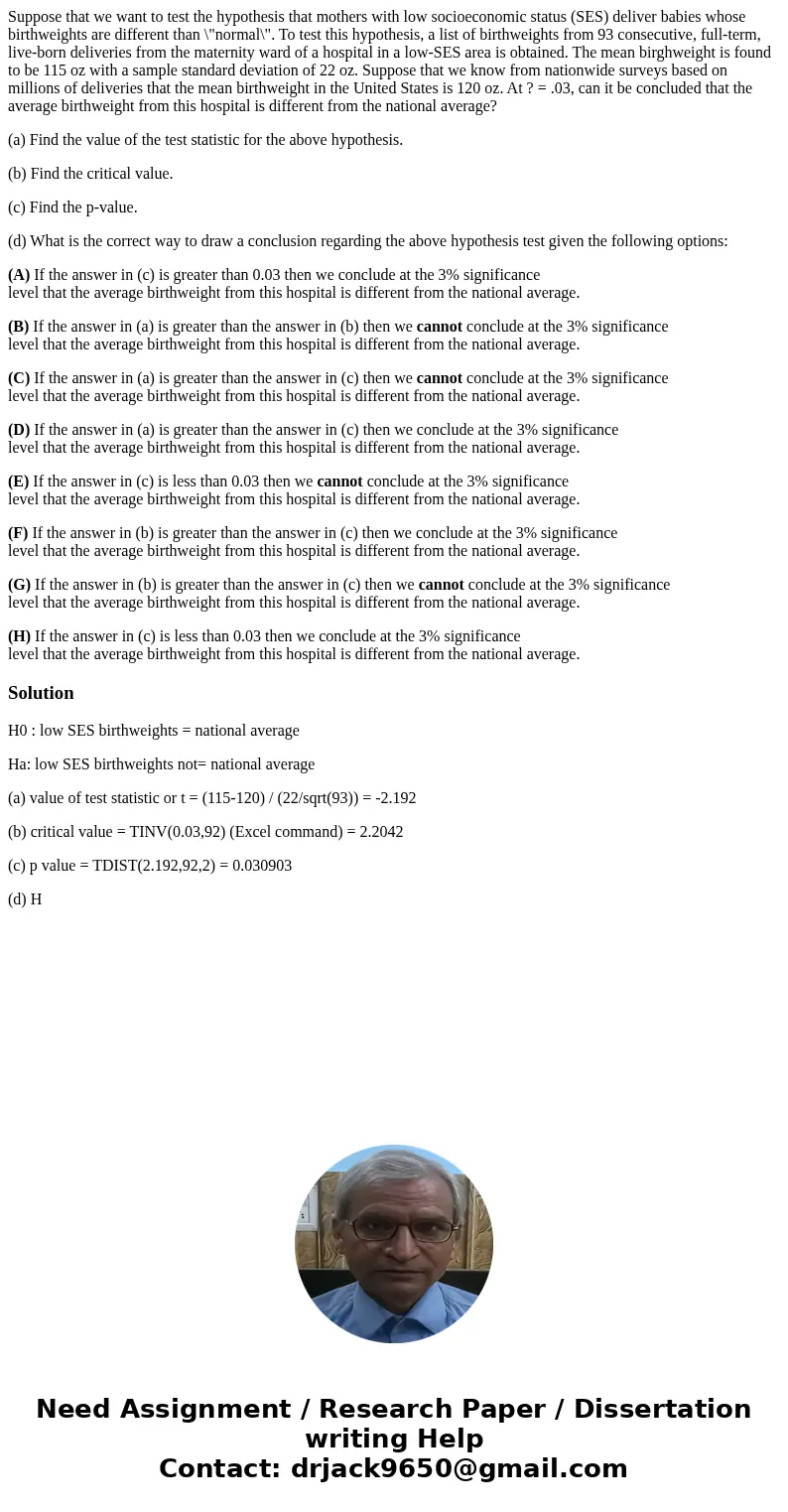Suppose that we want to test the hypothesis that mothers wit
Suppose that we want to test the hypothesis that mothers with low socioeconomic status (SES) deliver babies whose birthweights are different than \"normal\". To test this hypothesis, a list of birthweights from 93 consecutive, full-term, live-born deliveries from the maternity ward of a hospital in a low-SES area is obtained. The mean birghweight is found to be 115 oz with a sample standard deviation of 22 oz. Suppose that we know from nationwide surveys based on millions of deliveries that the mean birthweight in the United States is 120 oz. At ? = .03, can it be concluded that the average birthweight from this hospital is different from the national average?
(a) Find the value of the test statistic for the above hypothesis.
(b) Find the critical value.
(c) Find the p-value.
(d) What is the correct way to draw a conclusion regarding the above hypothesis test given the following options:
(A) If the answer in (c) is greater than 0.03 then we conclude at the 3% significance
level that the average birthweight from this hospital is different from the national average.
(B) If the answer in (a) is greater than the answer in (b) then we cannot conclude at the 3% significance
level that the average birthweight from this hospital is different from the national average.
(C) If the answer in (a) is greater than the answer in (c) then we cannot conclude at the 3% significance
level that the average birthweight from this hospital is different from the national average.
(D) If the answer in (a) is greater than the answer in (c) then we conclude at the 3% significance
level that the average birthweight from this hospital is different from the national average.
(E) If the answer in (c) is less than 0.03 then we cannot conclude at the 3% significance
level that the average birthweight from this hospital is different from the national average.
(F) If the answer in (b) is greater than the answer in (c) then we conclude at the 3% significance
level that the average birthweight from this hospital is different from the national average.
(G) If the answer in (b) is greater than the answer in (c) then we cannot conclude at the 3% significance
level that the average birthweight from this hospital is different from the national average.
(H) If the answer in (c) is less than 0.03 then we conclude at the 3% significance
level that the average birthweight from this hospital is different from the national average.
Solution
H0 : low SES birthweights = national average
Ha: low SES birthweights not= national average
(a) value of test statistic or t = (115-120) / (22/sqrt(93)) = -2.192
(b) critical value = TINV(0.03,92) (Excel command) = 2.2042
(c) p value = TDIST(2.192,92,2) = 0.030903
(d) H

 Homework Sourse
Homework Sourse